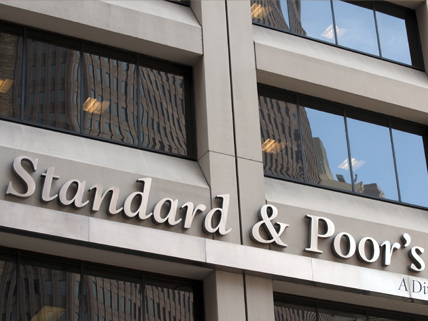Uncle Sam’s credit score just took a major ding. For the first time in its history, the United States has had its credit rating downgraded by Standard & Poor’s, a major credit ratings agency. S&P lowered the rating it gives U.S. Treasury bonds from AAA to AA+. The deal reached in early August to raise the debt ceiling was criticized as “political brinkmanship.” Although it committed the Obama administration and Congress to trimming more than $2 trillion from federal deficits over the next decade, these budget savings were seen as too little, too late. S&P claimed the federal government has proven unstable, ineffective, and unpredictable in handling its finances.
The other two major ratings firms did not lower the U.S. credit rating. After all, the nation did not default on its debts, and a compromise was reached on the debt ceiling, if only at the last minute. However, negative effects of the credit-rating downgrade could include higher costs of borrowing not only for the federal government but also for consumers and businesses. Many financial analysts consider Europe’s ongoing debt crisis and signs of a renewed recession as greater problems for the global economy than the downgrading of the U.S. debt. In fact, U.S. Treasury bonds continue to be viewed as a “safe haven” in uncertain economic times.
One commentator is cautiously optimistic that the downgrade may prove to be a financial “Sputnik moment” for Americans. That is, it may shock the national psyche in a similar way that the Soviet Union’s winning the race to put the first satellite into Earth orbit did in the 1950s. Such an outcome could unify Americans with a “renewed sense of purpose” to do what it takes to solve their country’s financial problems.
Image credit: © Don Emmert/AFP/Getty Images
Related Links
- S&P Downgrades U.S. Credit Rating for First Time
Learn the political and economic causes and effects of the U.S. credit-rating downgrade.
(Source: Washington Post, August 5, 2011) - S&P Downgrade of US Credit Rating Sends Clear Message to Congress: Shape Up
This article discusses the underlying politics of S&P’s wake-up call for Washington.
(Source: Christian Science Monitor, August 7, 2011) - Instant View: U.S. Loses AAA Credit Rating from S&P
Read the initial reactions of leading investors and top financial analysts to the downgrade of U.S. debt.
(Source: Reuters, August 5, 2011) - What the S&P Downgrade Means for the U.S. Economy
Explore this analysis of the likely impact of the S&P downgrade of America’s credit rating on the economy—from an analyst of one ratings firm that still rates the USA triple-A.
(Source: Moody’s Analytics, August 8, 2011)





lies!!
What a joy to find such clear tnhiknig. Thanks for posting!
This is an atrilce that makes you think “never thought of that!”
yeet